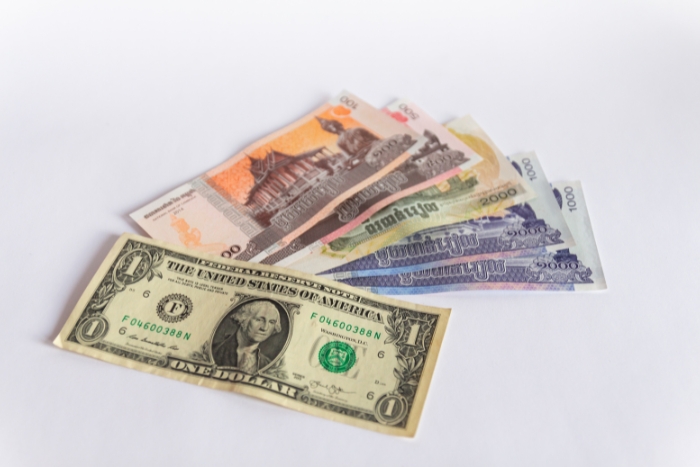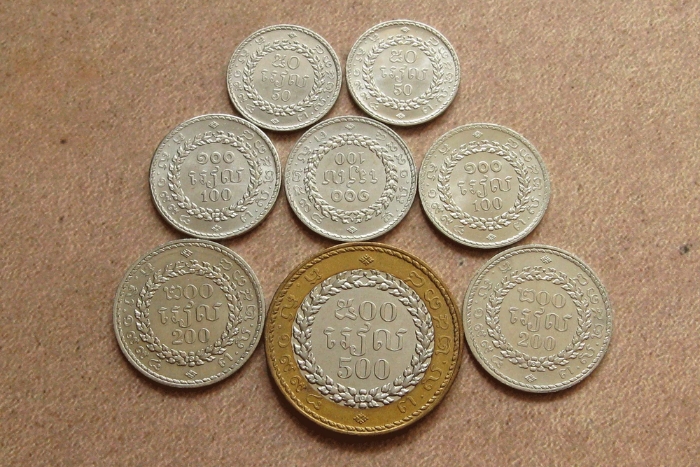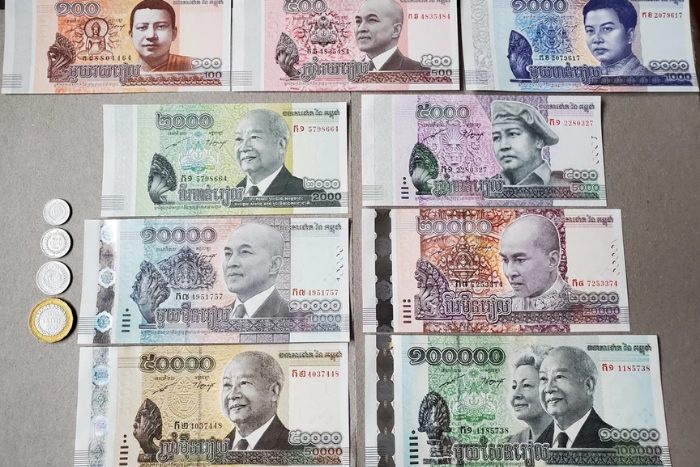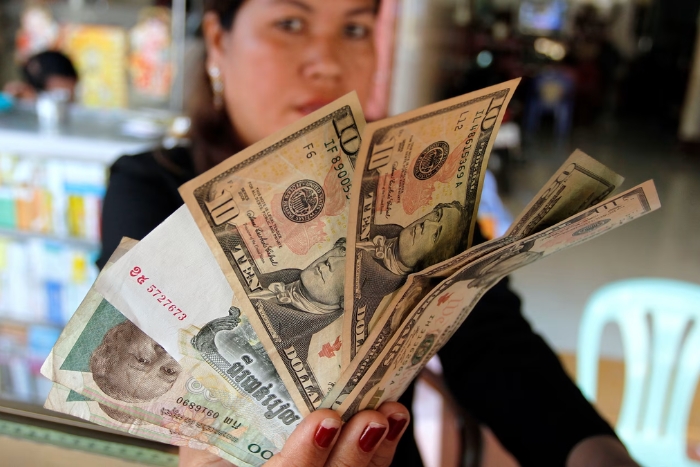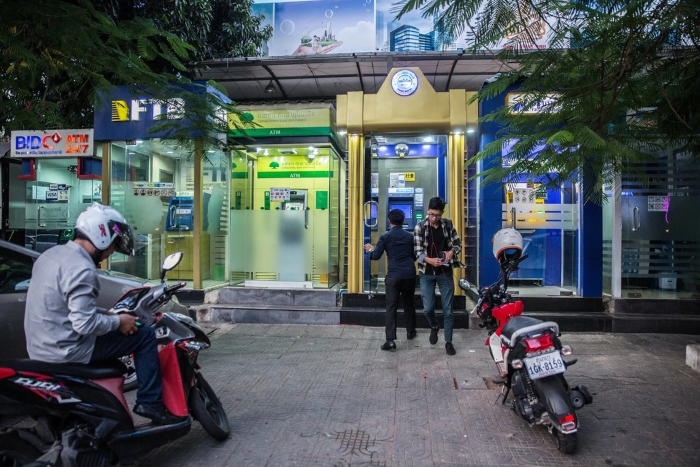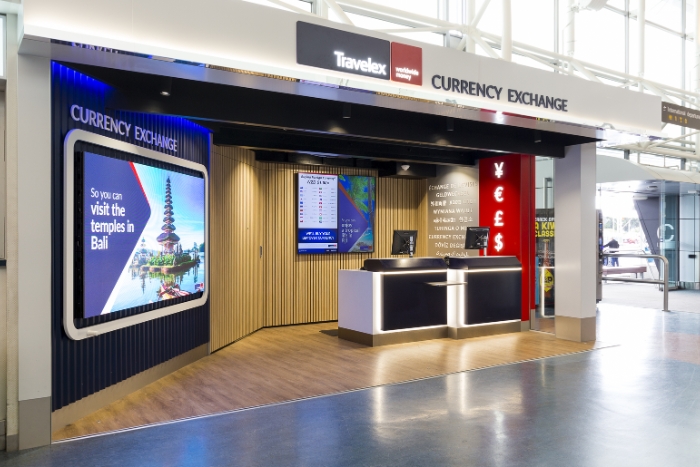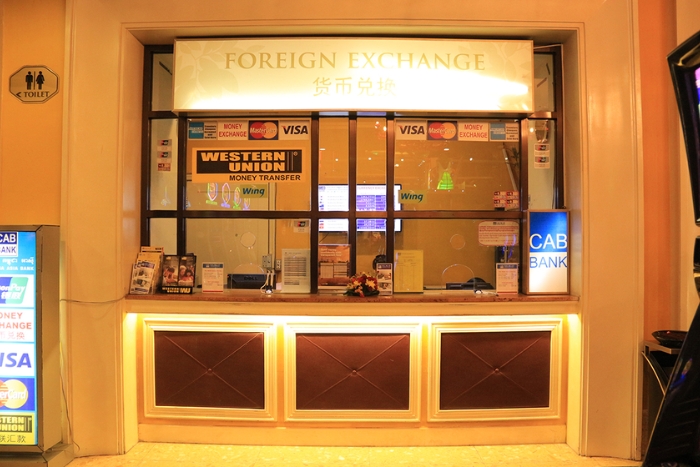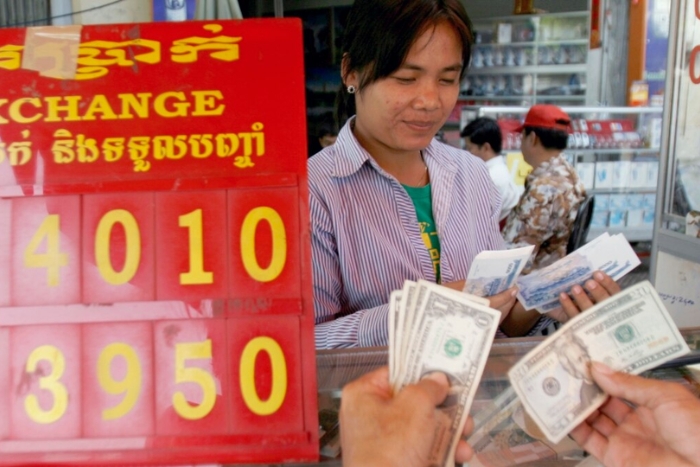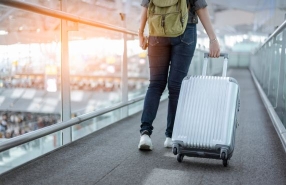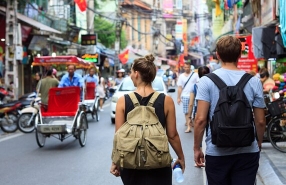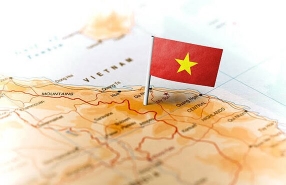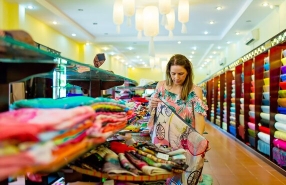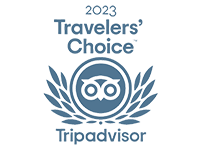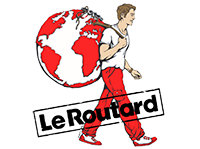
Before starting a trip to a country, it is extremely necessary to find out about the currency of the destination country. How to pay in Cambodia? In the article below, Autour Asia, Cambodia Travel Agency, aims to provide information related to the Cambodian currency and the famous places to exchange currencies when you come to this country.
How To Pay In Cambodia? Everything You Need To Know About Cambodia Currency
I. What currency is used in Cambodia? Cambodian Riel Exchange Rate
The official Cambodian currency is the riel, identified by the ISO code KHR and symbolized by ៛. Currently, 1 US dollar is equivalent to approximately 4,027 riels, while 1 euro is equivalent to approximately 4,154 riels.
The Cambodian riel was introduced in 1955, shortly after Cambodia gained independence in 1953. Prior to this period, the country used a variety of currencies, including the piastre, a legacy of French colonization. The adoption of the riel marked an important step in asserting sovereignty and national identity.
The US dollar is widely used in Cambodia and accepted as the Cambodian currency by most merchants, along with the riel. Prices in restaurants, shops, and large markets are generally quoted in dollars, while the riel remains more common in local markets. It should be noted that payment for the tourist visa is made exclusively in US dollars. In rural areas and small towns, the use of dollars may be less widespread, making it necessary to have riels available. In addition, small shops and local markets may not accept large dollar bills. It is therefore advisable to bring Cambodian money, the riel, with low denomination notes for daily purchases.
You may be interested in:
II. How to distinguish the Cambodian currency?
Cambodian currency exists in 2 forms: coins and banknotes. Riel coins and banknotes reflect the cultural, historical and natural richness of Cambodia. They are decorated with portraits of historical figures, emblematic monuments, as well as representations of local fauna and flora. Each form of Cambodian money has its own characteristics in terms of size, color and design, facilitating their identification and daily use.
1. Cambodian currency’s coins
Riel coins, the official Cambodian money (Cambodian currency), come in several denominations: 50, 100, 200 and 500 KHR. The 50 KHR coin is the smallest and is used for small purchases, while the 100 KHR coin has a slightly higher value. The 200 and 500 KHR coins are used for intermediate transactions and represent the largest denominations in circulation. Made of stainless steel, these coins feature a variety of designs that highlight Cambodia’s cultural and historical symbols.
However, these coins are now rare and rarely used in everyday transactions due to their low practicality. Their equivalent value in dollars is modest: 50 riels are worth about 1.15 cents, 100 riels about 2.3 cents, 200 riels about 4.6 cents, and 500 riels about 11.5 cents. As a result, they are more sought after by Cambodian currency collectors than by locals.
Although these coins are no longer commonly used, it is still possible to find them when traveling to the country. They are often kept by tourists as souvenirs, due to the symbolic designs they bear, representing Cambodian history and culture.
2. Cambodian Currency’s Paper Money
The Cambodian money is mainly the Cambodian Riel (KHR), which comes in various denominations, ranging from 100 to 100,000 riels. The most commonly used denominations in daily life are the 100, 200 and 500 KHR notes, while the 1,000, 2,000 and 5,000 KHR notes are for larger purchases. For larger transactions, the 10,000, 20,000, 50,000 and 100,000 KHR notes are commonly used. All of these notes are issued by the National Bank of Cambodia and are accepted throughout the country.
In terms of conversion, Cambodian currency notes of low denomination correspond to modest amounts: for example, 10 riels are worth about 0.23 euro cents, 50 riels are equivalent to 1.15 cents, and 500 riels are about 11.5 cents. Higher denomination notes, such as the 10,000 riel note, are equivalent to about 2.3 euros, while 50,000 riels are equivalent to about 11.5 euros.
How to pay in Cambodia? There are also 1, 2, and 5 riel notes, although their low denomination makes them little used today. Cambodian banknotes are distinguished by their unique features, making them easy to identify. In addition to their face value and varying colors, the notes also differ in size. For example, the 100 riel note is smaller and lighter compared to the 50,000 riel note. Each note features cultural symbols, iconic temples and important historical figures. Notable illustrations include Banteay Srey Temple, the Independence Monument in Phnom Penh, as well as figures such as King Norodom Sihanouk and symbols such as the mythical Naga serpent.
III. How to pay in Cambodia?
1. Cash
Paying with cash is the most common type of transaction in Cambodia. The Cambodian currency is the riel (KHR), but the US dollar is also widely used and accepted throughout the country. While credit cards are convenient for large payments, such as hotel fees, meals in large restaurants or expensive purchases, it is essential to always have cash for small transactions and payments in local markets. Indeed, in rural areas, street stalls, tuk-tuks and outside of major cities, it is almost impossible to use credit cards.
Both riels and dollars are accepted, but for everyday transactions, it is more common and convenient to use riels, Cambodian money, especially for small expenses such as street food, tuk-tuk rides or temple entrance fees. For purchases under 1 USD, it is therefore preferable to use riels.
2. Bank Card
Visa and Mastercard are widely accepted in Cambodia, especially in hotels, luxury restaurants, supermarkets, shopping malls and some souvenir shops. However, it is important to note that an additional fee of around 3% may be applied for each payment made by card. In major cities such as Phnom Penh and Siem Reap, these cards are generally accepted, but it is advisable to also have some Cambodian currency, the riel, or US dollars to cover small immediate charges.
How to pay in Cambodia? Outside of major cities and tourist areas, card payments are less common. Credit and debit cards are mainly accepted for services such as Giant Ibis buses or in Western fast food chains. However, in other establishments, paying by card is rare. Visa and MasterCard are the most commonly used international cards by travelers.
3. QR Code
Since the pandemic, Cambodia has massively adopted QR code payments and mobile banking, payment methods that have become very popular among Cambodians. However, as a foreign traveler, you will not be able to open a local bank account and therefore will not be able to make payments via your mobile phone. How to pay in Cambodia? If you hold a visa for 6 months or more for Cambodia, you will have the opportunity to open a bank account at ABA and thus access these convenient services.
Click for detailed information:
IV. Best places to change Cambodian currency
1. At the airport
At Phnom Penh International Airport and Siem Reap International Airport, there are several currency exchange counters that can exchange currency, which is convenient for quickly getting Cambodian currency upon arrival. However, this option is best suited for smaller amounts, as fees and exchange rates are often less attractive.
The airport currency exchange offices are open 24 hours a day, which is very convenient if you arrive at late hours. The services are generally reliable and safe. If you need to exchange money for Cambodian money (riel or dollar), it is advisable to change only a small amount, just to cover your transport costs to the city center. For larger amounts, it is best to compare rates at different exchange offices outside the airport, where the conditions are often more advantageous.
2. At the Bank
In Cambodia, banks, such as the ABA Bank supported by the National Bank of Canada, are a safe and reliable option for exchanging Cambodian money. They guarantee the security of exchanges, thus avoiding the risk of counterfeit money. Although the exchange rates are not always the most competitive, they are generally attractive and reliable.
However, the exchange process can be slow, especially during peak hours, and banks are only open during working hours, closed on weekends and public holidays. It is advisable to check the opening hours in advance and to bring your passport or identity card, as these documents are often required for exchanging Cambodian currency.
3. At the Currency Exchange
In Cambodia, there are many independent currency exchange offices in major cities and tourist areas, such as the Central Market in Phnom Penh or Pub Street in Siem Reap. These establishments generally offer more competitive Cambodian currency's exchange rates than banks and a fast service, well suited to travelers. However, it is essential to choose trusted exchange offices to avoid the risk of counterfeit Cambodian money and scams.
It is wise to be wary of exchange offices that offer “no commission” rates, as these are often less advantageous and hide profit margins. A good practice is to take a photo of your bills (especially in dollars) before exchanging them and to always carefully check the money you receive before leaving the establishment.
How to pay in Cambodia? Although the official Cambodia currency is the riel, the US dollar is widely used in the country, especially in urban and tourist areas. Travelers should be aware of the different payment options available and to carry small denominations to facilitate transactions in local markets and to be vigilant when exchanging Cambodian money. By understanding how the currency works in Cambodia, you will be able to manage your payments safely and fully enjoy your stay.
What to do during 1 week in Cambodia?
During 1 week in Cambodia, you can explore the famous temples of Angkor in Siem Reap, visit the capital Phnom Penh to learn about its history and culture, and relax on the beaches of Sihanoukville or the nearby islands. You can also try the delicious local cuisine and take part in outdoor activities like boat trips on Tonle Sap Lake.
Genevieve D.
5.0
Excellent
How to pay in Cambodia?
For all types of purchases, you can pay in dollars, but the Cambodian currency, the riel, will usually be returned in riels. It is important to always have some riels with you, especially if you are traveling in rural areas, as dollars are not accepted for small purchases.

